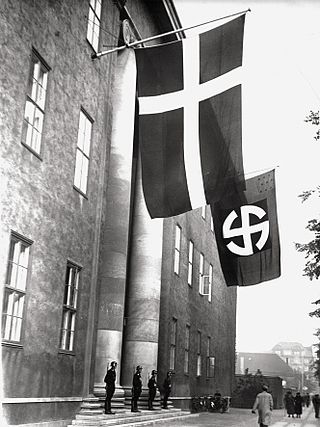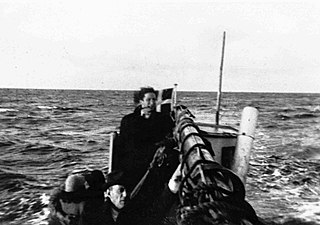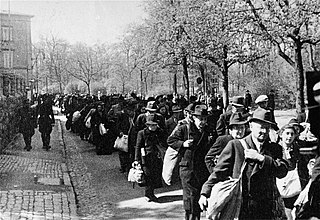
At the outset of World War II in September 1939, Denmark declared itself neutral, but that neutrality did not prevent Nazi Germany from occupying the country almost immediately after the outbreak of war, lasting until Germany's defeat. The decision to occupy Denmark was taken in Berlin on 17 December 1939. On 9 April 1940, Germany occupied Denmark in Operation Weserübung. The Danish government and king functioned in a relatively normal manner until 29 August 1943, when Germany placed Denmark under direct military occupation, which lasted until the Allied victory on 5 May 1945. Contrary to the situation in other countries under German occupation, most Danish institutions continued to function relatively normally until 1945. Both the Danish government and king remained in the country in an uneasy relationship between a democratic and a totalitarian system until 1943 when the Danish government stepped down in protest against German demands that included instituting the death penalty for sabotage.

The Danish resistance movements were an underground insurgency to resist the German occupation of Denmark during World War II. Due to the initially lenient arrangements, in which the Nazi occupation authority allowed the democratic government to stay in power, the resistance movement was slower to develop effective tactics on a wide scale than in some other countries.

During World War II, some individuals and groups helped Jews and others escape the Holocaust conducted by Nazi Germany.

Georg Ferdinand Duckwitz was a German diplomat. During World War II, he served as an attaché for Nazi Germany in occupied Denmark. He tipped off the Danes about the Germans' intended deportation of the Jewish population in 1943 and arranged for their reception in Sweden. Danish resistance groups subsequently rescued 95% of Denmark's Jewish population. Israel has designated Duckwitz as one of the Righteous Among the Nations.

The Danish resistance movement, with the assistance of many Danish citizens, managed to evacuate 7,220 of Denmark's 7,800 Jews, plus 686 non-Jewish spouses, by sea to nearby neutral Sweden during the Second World War. The arrest and deportation of Danish Jews was ordered by the German leader Adolf Hitler, but the efforts to save them started earlier due to the plans being leaked on September 28, 1943, by German diplomat Georg Ferdinand Duckwitz.

Gilleleje is a fishing town and seaside resort on the north coast of the peninsula North Zealand, Denmark. The town is located at the northernmost point of the island of Zealand. It is one of the main towns of the Gribskov municipality in Region Hovedstaden in Denmark. As of 1 January 2023, it has a population of 6,778.

Number the Stars is a work of historical fiction by the American author Lois Lowry about the escape of a family of Jews from Copenhagen, Denmark, during World War II.

Justin Garrett Whalin is an American teacher and former actor. He portrayed the teenage Andy Barclay in Child's Play 3, Ridley Freeborn in Dungeons & Dragons, and Jimmy Olsen in the American television series Lois & Clark: The New Adventures of Superman.

Karl Rudolf Werner Best was a German jurist, police chief, SS-Obergruppenführer, Nazi Party leader, and theoretician from Darmstadt. He was the first chief of Department 1 of the Gestapo, Nazi Germany's secret police, and initiated a registry of all Jews in Germany. As a deputy of SS-Obergruppenführer Reinhard Heydrich, he organized the World War II SS-Einsatzgruppen, paramilitary death squads that carried out mass-murder in Nazi-occupied territories.
During World War II, resistance movement occurred in German-occupied Europe by a variety of means, ranging from non-cooperation to propaganda, hiding crashed pilots and even to outright warfare and the recapturing of towns. In many countries, resistance movements were sometimes also referred to as The Underground. The resistance movements in World War II can be broken down into two primary politically polarized camps: the internationalist and usually Communist Party-led anti-fascist resistance that existed in nearly every country in the world; and the various nationalist groups in German- or Soviet-occupied countries, such as the Republic of Poland, that opposed both Nazi Germany and the Communists.

Otto Christian Archibald, Prince of Bismarck, was a German politician and diplomat, and the Prince of Bismarck from 1904 to his death.

The Holocaust in Estonia refers to Nazi crimes during the occupation of Estonia by Nazi Germany.
Events from the year 1943 in Denmark.
The Only Way is a 1970 war drama film about the Rescue of the Danish Jews starring Jane Seymour.
The Elsinore Sewing Club, was a Danish organization established in 1943 which covertly transported Danish Jews to safety during the Nazi occupation of Denmark. The town of Helsingør was only two miles away from Sweden, across the Øresund, from the Swedish city of Helsingborg. This allowed the transport of refugees by local boats.

The Holocaust in Hungary was the dispossession, deportation, and systematic murder of more than half of the Hungarian Jews, primarily after the German occupation of Hungary in March 1944.

Emigration of Jews from Nazi Germany and German-occupied Europe started after Adolf Hitler came into power in 1933.

The question of how much Germans knew about the Holocaust while it was ongoing continues to be debated by historians. With regard to Nazi Germany, some historians argue that it was an open secret amongst the population, whilst others highlight a possibility that the German population were genuinely unaware of the Final Solution. Peter Longerich argues that the Holocaust was an open secret by early 1943, but some authors place it even earlier. However, after the war, many Germans claimed that they were ignorant of the crimes perpetrated by the Nazi regime, a claim associated with the stereotypical phrase "Davon haben wir nichts gewusst".
Sweden was a neutral state during World War II and was not directly involved in the Holocaust in German-occupied Europe. Nonetheless, the Swedish government maintained important economic links with Nazi Germany and there was widespread awareness within the country of its policy of persecution and, from 1942, mass extermination of Jews.
Aage and Gerda Bertelsen (–) participated in the Danish resistance movement by rescuing Danish Jews and refugees. They were members and leaders of Lyngby group.













